Zhiyu Cheng
SoccerNet-Tracking: Multiple Object Tracking Dataset and Benchmark in Soccer Videos
Apr 20, 2022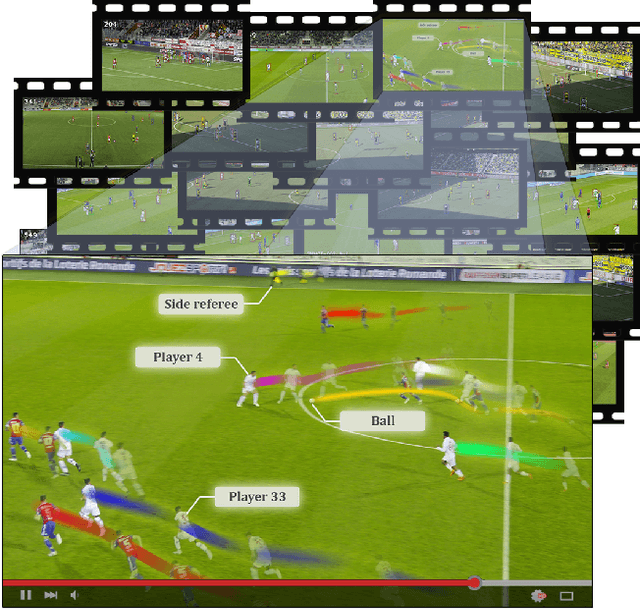


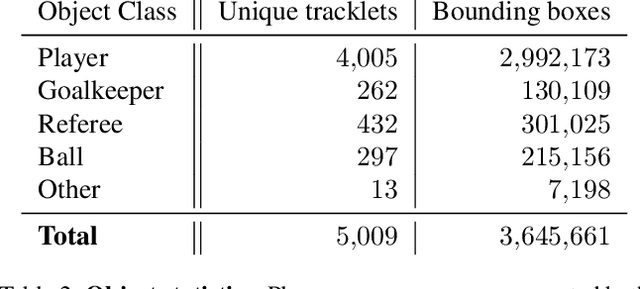
Abstract:Tracking objects in soccer videos is extremely important to gather both player and team statistics, whether it is to estimate the total distance run, the ball possession or the team formation. Video processing can help automating the extraction of those information, without the need of any invasive sensor, hence applicable to any team on any stadium. Yet, the availability of datasets to train learnable models and benchmarks to evaluate methods on a common testbed is very limited. In this work, we propose a novel dataset for multiple object tracking composed of 200 sequences of 30s each, representative of challenging soccer scenarios, and a complete 45-minutes half-time for long-term tracking. The dataset is fully annotated with bounding boxes and tracklet IDs, enabling the training of MOT baselines in the soccer domain and a full benchmarking of those methods on our segregated challenge sets. Our analysis shows that multiple player, referee and ball tracking in soccer videos is far from being solved, with several improvement required in case of fast motion or in scenarios of severe occlusion.
ASM-Loc: Action-aware Segment Modeling for Weakly-Supervised Temporal Action Localization
Mar 29, 2022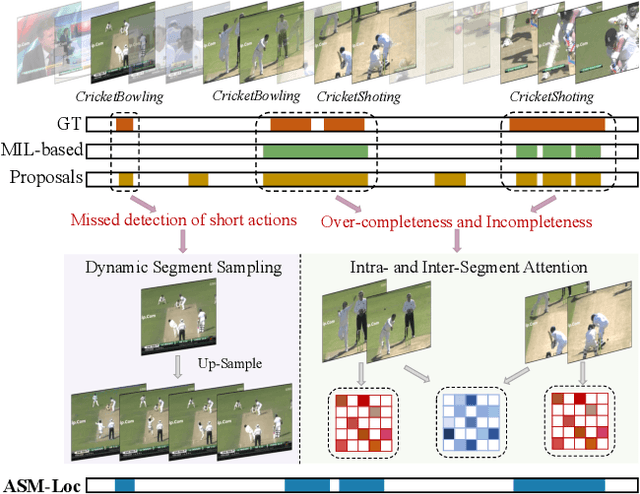
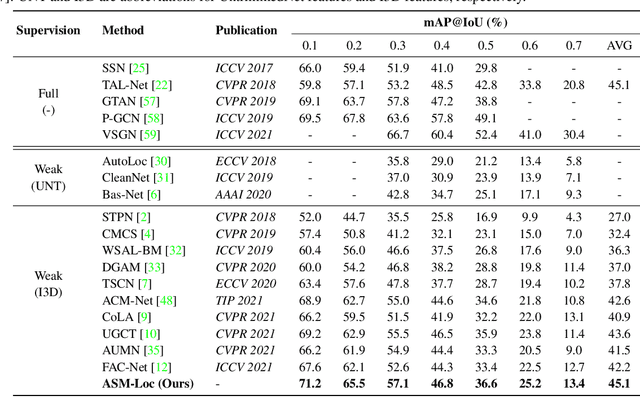
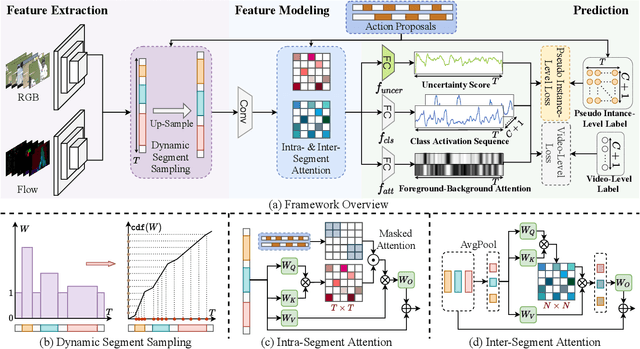
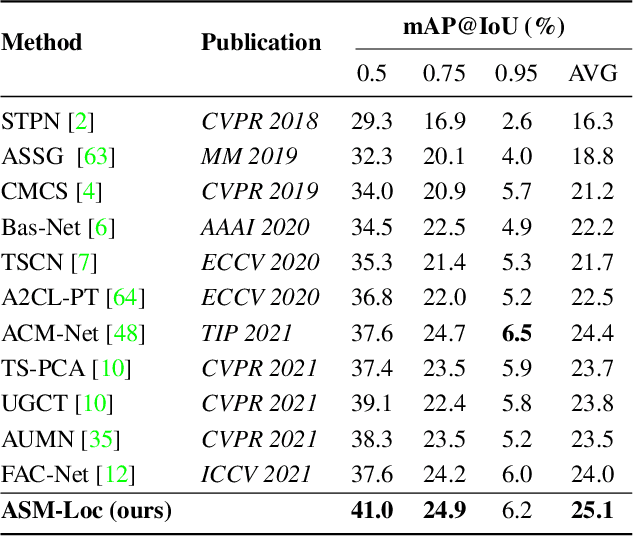
Abstract:Weakly-supervised temporal action localization aims to recognize and localize action segments in untrimmed videos given only video-level action labels for training. Without the boundary information of action segments, existing methods mostly rely on multiple instance learning (MIL), where the predictions of unlabeled instances (i.e., video snippets) are supervised by classifying labeled bags (i.e., untrimmed videos). However, this formulation typically treats snippets in a video as independent instances, ignoring the underlying temporal structures within and across action segments. To address this problem, we propose \system, a novel WTAL framework that enables explicit, action-aware segment modeling beyond standard MIL-based methods. Our framework entails three segment-centric components: (i) dynamic segment sampling for compensating the contribution of short actions; (ii) intra- and inter-segment attention for modeling action dynamics and capturing temporal dependencies; (iii) pseudo instance-level supervision for improving action boundary prediction. Furthermore, a multi-step refinement strategy is proposed to progressively improve action proposals along the model training process. Extensive experiments on THUMOS-14 and ActivityNet-v1.3 demonstrate the effectiveness of our approach, establishing new state of the art on both datasets. The code and models are publicly available at~\url{https://github.com/boheumd/ASM-Loc}.
Feature Combination Meets Attention: Baidu Soccer Embeddings and Transformer based Temporal Detection
Jun 28, 2021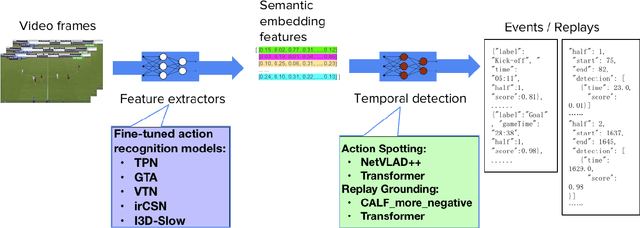
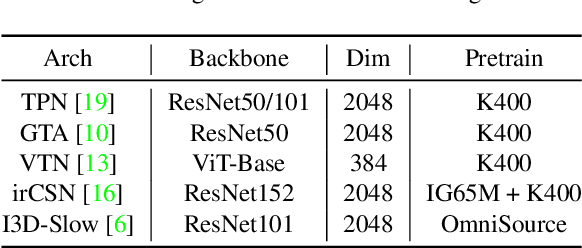
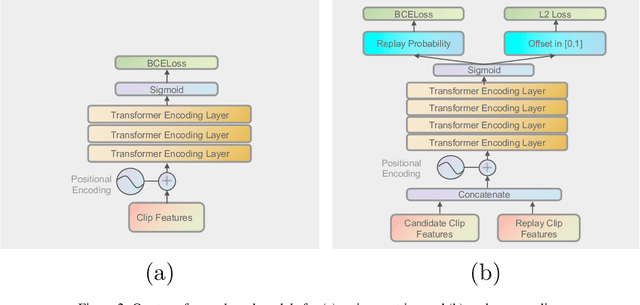
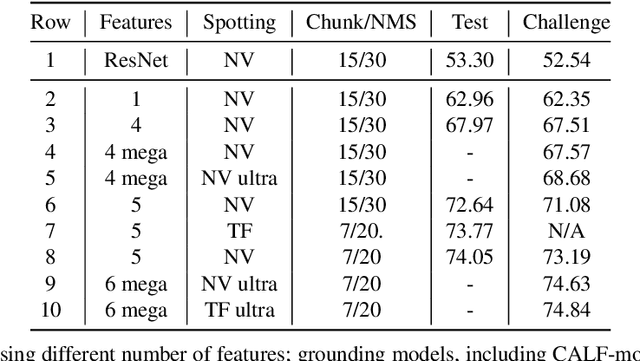
Abstract:With rapidly evolving internet technologies and emerging tools, sports related videos generated online are increasing at an unprecedentedly fast pace. To automate sports video editing/highlight generation process, a key task is to precisely recognize and locate the events in the long untrimmed videos. In this tech report, we present a two-stage paradigm to detect what and when events happen in soccer broadcast videos. Specifically, we fine-tune multiple action recognition models on soccer data to extract high-level semantic features, and design a transformer based temporal detection module to locate the target events. This approach achieved the state-of-the-art performance in both two tasks, i.e., action spotting and replay grounding, in the SoccerNet-v2 Challenge, under CVPR 2021 ActivityNet workshop. Our soccer embedding features are released at https://github.com/baidu-research/vidpress-sports. By sharing these features with the broader community, we hope to accelerate the research into soccer video understanding.
 Add to Chrome
Add to Chrome Add to Firefox
Add to Firefox Add to Edge
Add to Edge